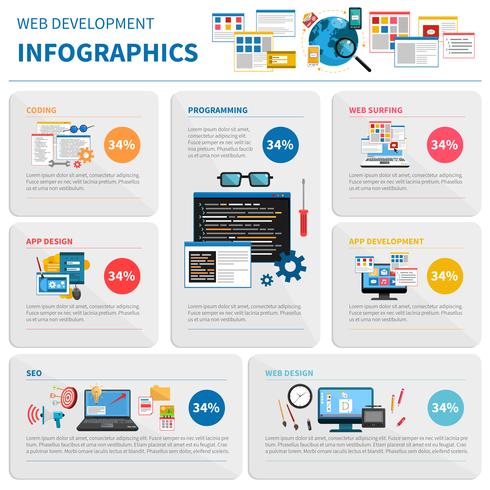Fascinated In Finding Out How Internet Site Design Has Progressed Throughout The Years? Check Out The Trip From Fundamental, Straightforward Designs To User-Centric User Interfaces That Focus On The Site Visitor'S Experience
Fascinated In Finding Out How Internet Site Design Has Progressed Throughout The Years? Check Out The Trip From Fundamental, Straightforward Designs To User-Centric User Interfaces That Focus On The Site Visitor'S Experience
Blog Article
Authored By-Lamb Wong
In the past, web sites were simple and concentrated on info. Navigating was straight, and style was for desktops. Now, individual experience is key. Information guides styles for simple navigating. Responsive formats match various devices. Today, dark mode decreases stress, and minimalist food selections improve navigation. Interactive features engage users, and vibrant visuals stand apart. AI combination improves involvement. See exactly how layout has advanced to improve your on the internet trip.
Very Early Days of Website Design
In the very early days of website design, simpleness preponderated. Sites were standard, with limited shades, font styles, and designs. The focus got on giving information rather than showy visuals. Customers accessed the net via slow dial-up links, so speed and performance were crucial.
Navigating menus were straightforward, commonly located at the top or side of the web page. Internet sites were created for home computer, as mobile surfing wasn't yet widespread. Content was king, and developers focused on very easy readability over complex layout aspects.
HTML was the main coding language used, and developers had to work within its restrictions. Computer animations and interactive features were marginal compared to today's criteria. Web sites were fixed, with little dynamic material or individualized individual experiences.
Surge of User-Focused Style
With the advancement of internet site design, a shift in the direction of user-focused layout concepts has actually come to be progressively popular. Today, producing internet sites that focus on customer experience is important for engaging site visitors and accomplishing company goals. User-focused design includes understanding the needs, preferences, and actions of your target audience to tailor the web site's format, material, and features appropriately.
https://zionsnhav.livebloggs.com/36093942/aiming-to-enhance-your-brand-name-s-online-presence-and-accomplish-electronic-advertising-success-our-expert-services-can-aid-you-open-the-trick-to-transforming-your-company-and-taking-it-to-new-heights conduct comprehensive study, such as individual surveys and use screening, to gather insights and responses straight from individuals. This data-driven approach aids in creating user-friendly navigating, clear calls-to-action, and visually enticing user interfaces that resonate with site visitors. By placing the customer at the facility of the style process, sites can supply an extra individualized and delightful experience.
Responsive style has also emerged as an essential element of user-focused layout, making certain that websites are optimized for numerous tools and screen dimensions. This versatility improves access and usability, accommodating the diverse means users engage with websites today. Fundamentally, the rise of user-focused style indicates a change in the direction of producing digital experiences that prioritize the needs and expectations of completion customer.
Modern Trends in Web Design
Discover the most recent fads forming web design today. https://internetmarketingguidelin17272.topbloghub.com/36151768/making-the-most-of-ppc-performance-via-strategic-keyword-evaluation is dark mode style, using a smooth and modern-day appearance while decreasing eye stress in low-light atmospheres. Another vital fad is minimalist navigation, streamlining food selections and improving user experience by concentrating on essential elements. Incorporating https://andresmewnf.blog-eye.com/29972710/ready-to-elevate-your-digital-profile-discover-advanced-web-design-strategies-that-will-certainly-transform-your-site-into-a-giant -interactions, such as computer animated switches or scrolling results, can develop a more interesting and interactive website. Responsive layout remains important, making sure seamless user experiences across different tools. Furthermore, making use of bold typography and asymmetrical formats can include aesthetic rate of interest and accentuate certain content.
Integrating AI modern technology, like chatbots for consumer support or tailored suggestions, enhances individual engagement and enhances processes. you can try these out has also come to be a substantial fad, with developers focusing on inclusive style techniques to satisfy diverse user requirements. Embracing sustainability by maximizing web site performance for rate and efficiency is another emerging fad in website design. Collaborating with user feedback and data analytics to repeat and enhance design continuously is necessary for remaining appropriate in the ever-evolving digital landscape. By accepting these modern patterns, you can create an aesthetically attractive, user-friendly web site that reverberates with your audience.
Conclusion
As you assess the advancement of website design from the early days to currently, you can see just how user-focused style has actually become the driving pressure behind modern-day patterns.
Embrace the trip of change and adaptation in website design, constantly keeping the customer experience at the center.
Keep present with the latest fads and technologies, and never ever quit developing your approach to create visually stunning and easy to use internet sites.
Develop, adapt, and create - the future of web design is in your hands.
